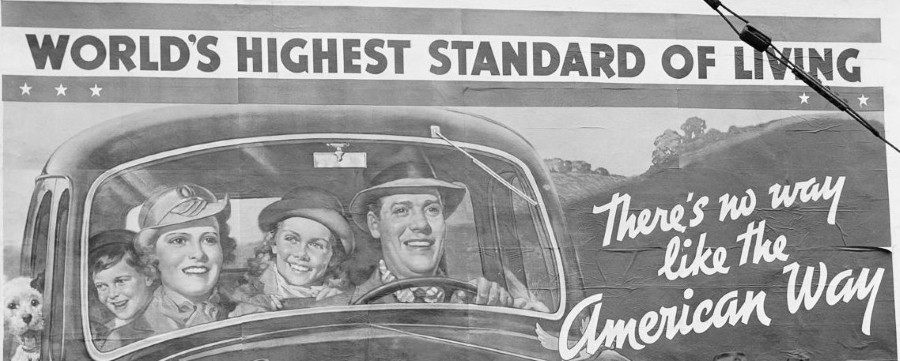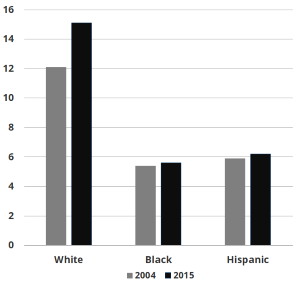Researcher Examines Effect of Racism on the Health of Whites
Theory-building research points to how a racialized social system of whiteness benefits whites’ health in some ways while adversely affecting whites’ health in other ways.
Date: 10/19/2017 12:00:00 PM
By: Jonathan Goolsby
Contact: Jennifer Malat, jennifer.malat@uc.edu
Julie Campbell-Holmes, julie.campbell@uc.edu
Phone: (513) 509-1114

CINCINNATI, Oh. — Although many studies over the past century have looked at the effect of racism on American health outcomes, an astonishingly small amount of that research has asked how it affects the health of whites.
Jennifer Malat, a professor in the University of Cincinnati’s (UC) Sociology department and current Director of The Cincinnati Project, hopes to change that.
A paper she co-authored, which will appear in a forthcoming special issue of the journal Social Science & Medicine, seeks to establish a framework by which researchers can evaluate the ways that racism can both augment and suppress whites’ health.
“We turn the lens on whites by using tools that have previously been used to understand the health disadvantages of people of color,” Malat said.
“The more we understand how whiteness shapes health in this country, the better equipped we are to improve everyone’s health,” added University of Massachusetts—Boston sociologist Sarah Mayorga-Gallo, who collaborated with Malat to produce their new research framework.
The concept of whiteness and its effects.

Professor Jennifer Malat
Whiteness, in Malat and her co-authors’ view, doesn’t simply refer to membership in a group that’s defined by skin color. Rather, it’s a term used to refer to the economic and social privileges afforded to white individuals in the United States.
“Race in our country is one of the fundamental markers we use to distribute economic and social resources,” Malat said. “Race was created for this precise purpose.”
Racial categories, Mayorga-Gallo asserted, are accompanied by beliefs about people in each group that help individuals make sense of how the world is organized. In the case of the United States, that means making sense of rampant racial inequality, she said.
Rather than include a historically accurate story about why inequality exists, racial narratives reinforce stereotypes about who works hard and who deserves help, Malat said. These incorrect beliefs then influence public policy.
“Restrictive social policies have grown from beliefs about the undeservingness of people of color,” the researchers asserted. “The result most commonly harms whites, who, in contrast to the perceptions of many Americans, constitute the plurality of the poor.”
For example, although the Affordable Care Act gave an estimated 20 million more Americans — many, lower- and middle-class whites — access to health coverage, “many whites viewed Obamacare as a program that would disproportionately benefit minorities.”
“As a result of misconceptions about Obamacare and who it benefits, Congress has voted on several bills – none that have yet passed – that would leave millions of Americans without health insurance,” Malat pointed out.
Tracking the negative health consequences of whiteness.
White people have many advantages in American society, Malat observed, including higher average wealth, higher average income, higher average education, and less discrimination.
Those advantages, she said, often lead to whites having better health than their counterparts in other American demographic groups.
But a weak social safety net, as well as common narratives of self-determination and entitlement for whites, can work against them when they experience hard times.
Malat said that adverse health outcomes attributable to America’s obsession with pulling one’s self up by the bootstraps were made glaringly evident during the Great Recession.
As middle and lower-class white America’s fortunes fell, its substance abuse, addiction, mental illness and suicide rates rose quickly.
Those trends were particularly evident among whites with a high school degree or less, who would have benefited from a stronger social safety net and better psychological tools for responding to hard times.

Yearly Suicide Rates per 100,000 People
By contrast, other groups — black Americans and Latino Americans, for example — exhibited more resilience. Substance misuse and suicide rates for both groups did not show the same marked increase during the recession.
Such indicators suggest that American whites may exhibit a “limited ability to positively respond to the stress caused by loss of status,” Malat and her co-authors hypothesized.
“White-collar workers have difficulty making meaning of their job loss. Their belief in meritocracy leads them to blame themselves rather than external forces for their situation,” they wrote. “In contrast to whites, blacks are more likely to rely on structural explanations for accounting for their adversities.”
That tendency, Malat speculated, may afford people of color with relative mental health advantages in adverse economic or social circumstances.
She noted that these social, psychological, economic consequences of racial inequality may also account for America’s poor health compared to other countries.
Malat and her colleagues cited a 2016 report by the National Center for Health Statistics that showed white Americans’ life expectancy ranks only 35th in the world — behind that of Cuba, South Korea, Greece and Chile.
“Our system of racial inequality — while it provides a lot of benefits to whites overall — may also harm white people sometimes,” Malat explained.
That, she said, is the fresh perspective that her team’s current research provides.
“We encourage people to think more comprehensively about how the system of racial inequity affects health, including the health of white people,” she said.